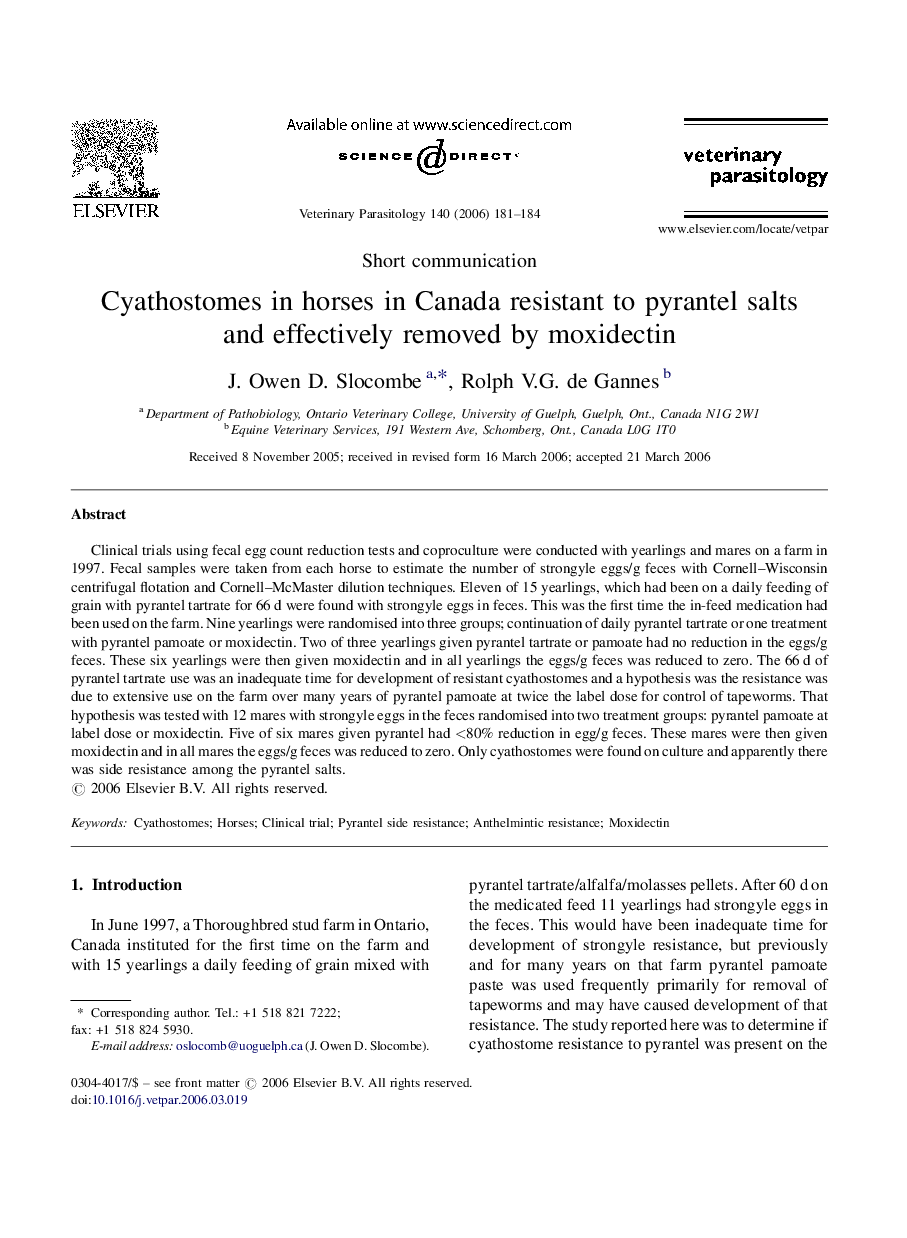| Article ID | Journal | Published Year | Pages | File Type |
|---|---|---|---|---|
| 2472462 | Veterinary Parasitology | 2006 | 4 Pages |
Clinical trials using fecal egg count reduction tests and coproculture were conducted with yearlings and mares on a farm in 1997. Fecal samples were taken from each horse to estimate the number of strongyle eggs/g feces with Cornell–Wisconsin centrifugal flotation and Cornell–McMaster dilution techniques. Eleven of 15 yearlings, which had been on a daily feeding of grain with pyrantel tartrate for 66 d were found with strongyle eggs in feces. This was the first time the in-feed medication had been used on the farm. Nine yearlings were randomised into three groups; continuation of daily pyrantel tartrate or one treatment with pyrantel pamoate or moxidectin. Two of three yearlings given pyrantel tartrate or pamoate had no reduction in the eggs/g feces. These six yearlings were then given moxidectin and in all yearlings the eggs/g feces was reduced to zero. The 66 d of pyrantel tartrate use was an inadequate time for development of resistant cyathostomes and a hypothesis was the resistance was due to extensive use on the farm over many years of pyrantel pamoate at twice the label dose for control of tapeworms. That hypothesis was tested with 12 mares with strongyle eggs in the feces randomised into two treatment groups: pyrantel pamoate at label dose or moxidectin. Five of six mares given pyrantel had <80% reduction in egg/g feces. These mares were then given moxidectin and in all mares the eggs/g feces was reduced to zero. Only cyathostomes were found on culture and apparently there was side resistance among the pyrantel salts.
